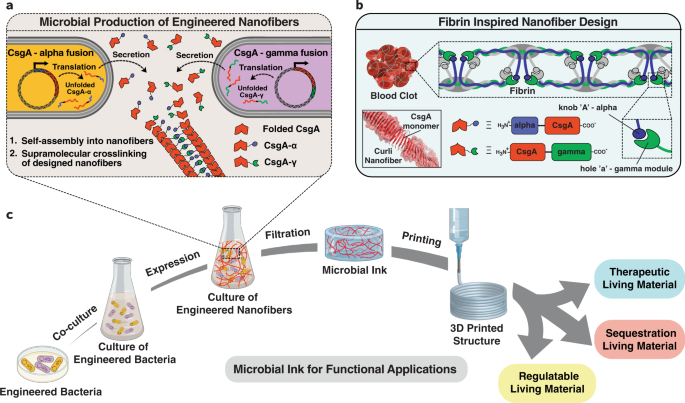
A concept validation study published in Nature Communications reported on a programmable microbial ink for 3D printing of living materials produced from genetically engineered protein nanofibers. This study demonstrated the potential applications of this technology, such as isolating toxic chemicals like bisphenol A (BPA) that appear in the environment.
By directly utilizing microorganisms to prepare printing inks without the need for additional polymers or additives, new possibilities for material manufacturing are opened up in cases where traditional materials are unavailable. This technology can also develop materials that can sense and respond to their surrounding environment. The ability to 3D print such materials holds promise for customization and modification for specific purposes. Microbial inks composed of living cells are candidate media for achieving this goal, but they need to combine target material properties with cell viability.
Neel Joshi and colleagues from Northeastern University reported on an advanced microbial ink made from Escherichia coli (E. coli) that has been genetically engineered to produce nanofibers. These nanofibers can be concentrated and printed into 3D structures. The authors then combined this ink with other genetically engineered microorganisms designed to perform specific tasks, finding that this hydrogel can acquire functionality. They created a material that can secrete the anticancer protein azurin when encountering chemical stimuli and designed a material capable of isolating the toxic chemical bisphenol A from the environment.
The research results demonstrate the potential of this technology to print functional materials for biotechnology and biomedical applications. The authors believe that their research may provide insights into spatial structure construction, but further studies are needed to explore its future customizable uses.

Design strategies, production, and functional applications of microbial inks. Source: Duraj-Thatte et al.
©Nature
Nat Com | doi: 10.1038/s41467-021-26791-x
Click “Read Original” for the full paper:
Programmable microbial ink for 3D printing of living materials produced from genetically engineered protein nanofibers
Related Articles
Reprogramming Brain Cells to Treat Parkinson’s Disease | Nature Biotechnology Paper
Economically Upgrading Plastic Waste into Chemical Materials and Fuels | Nature Communications Paper
Copyright Notice:
This article has been translated by the Springer Nature Shanghai office. The Chinese content is for reference only, and all content is subject to the English original. Feel free to share it on social media, and for reprints, please email [email protected]. Unauthorized translations are considered copyright infringement, and the copyright holder reserves the right to pursue legal action.
© 2021 Springer Nature Limited. All Rights Reserved
